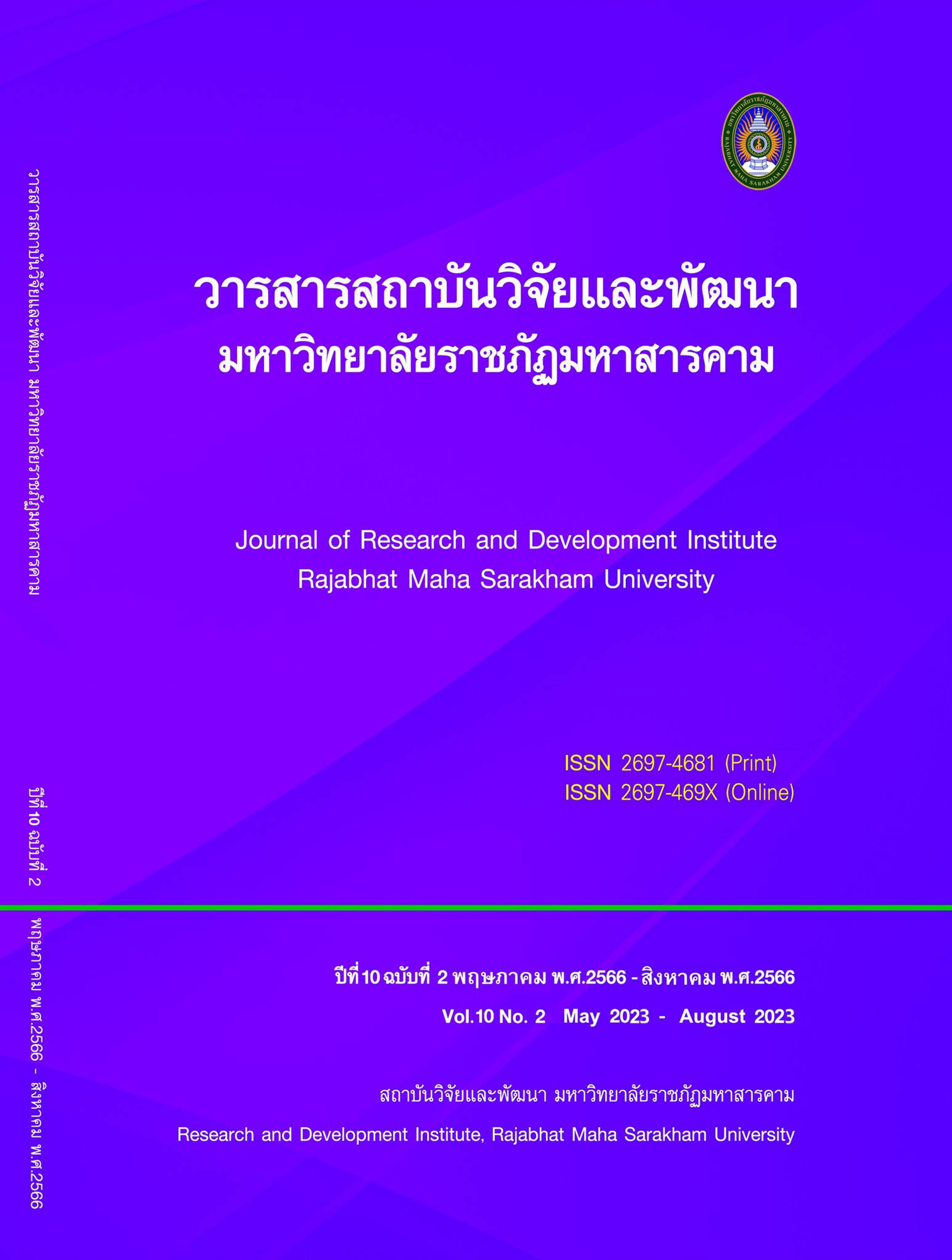The Development Model of Teacher in Learning for 21st Century For Educational Opportunity Schools Under the Khonkaen Elementary Educational Service Area Office 3
Keywords:
Development model of teacher, Learning for 21st centuryAbstract
We are living in the twenty-first century. It's said that all organizations need to adapt to this new era of change. Many nations have experienced both positive and negative effects as a result of these changes. To survive in society in the future, humans will need to pick up new skills. The objectives of this research were to: 1) study the components of learning for the 21st century 2) study the current and the desirable state of developing learning for the 21st century for educational opportunity schools Under the Khonkaen Elementary educational service area office 3 3) create the development model of teacher in learning for the 21st century 4) study the results of the experimental model. The research was divided into four phases as follows; phase 1; studied the components of learning for the 21st century, with 9 experts. phase 2; study the current and the desirable state of developing learning for the 21st century. This was done by working with 237 school administrators and teachers, The research instrument was a questionnaire, and the confidence of the whole questionnaire was 0.79. phase 3; create the development model of teacher in learning for the 21st century, this was done by a group of 9 experts for focus group discussion and 9 experts for Connoisseurship. stage 4; study the results of using the model. This was done by a target group of 16 people.
The results found that:
- The components of learning for the 21st century consisted of 4 major, Including 1) child-centered learning 2) learning technology-based Learning 3) management system, and 4) formative evaluations.
- The current state overall was high average and the desirable state overall was at the highest level. The priority need rank from high to low level was 1) learning technology base Learning 2) formative evaluations 3) development management system and 4) child-centered learning
- The model is comprised of 1) principles 2) objectives 3) content activities 4) development process and 7) assessment. The result of evaluation for accuracy, propriety, feasibility, and utility was the highest overall.
- The results of using the development model of teacher in learning for the 21st century for educational opportunity schools under the Khonkaen Elementary educational service area office 3 was the highest level of the average and satisfaction at the highest level.
In conclusion, with top ratings for feasibility and utility, the study demonstrated the efficacy of a 21st-century learning model that emphasizes technology-based learning, formative assessments, and child-centered approaches. Teacher development and satisfaction in Khonkaen educational opportunity schools were greatly enhanced by this model.
References
Chaiyarat, S. (2019). The development of teacher leadership development model in learning management according to the philosophy of sufficiency economy. in secondary school Under the Office of Education Region 1. Sakon Nakhon: Sakon Nakhon Rajabhat University.
Chiangkul, W. (2016). Study deeply, know how to use your brain efficiently. Bangkok: Institute of Learning Sciences.
Eisner, E.W. (1985). Creative education in American schools today. Educational Horizons, 63 Special Issues, 10 – 15.
Eua-arporn, B. (2014). Report of participation in the academic seminar on "Challenges of New Frontier in Learning: Education 4.0." Bangkok : Chulalongkorn University.
Joyce, B. and Weil, M. and B. Showers. (2011). Models of Teaching. Boston: Allyn and Bacon.
Kay, K. (2018). 21st century skills: Why they matter, what they are, and how we get there. In Bellanca, J., & Brandt, R. (Eds.), 21st century skills: Rethinking how students learn. Bloomington, IN: Solution Tree Press.
Keeves, J. Peter. (1988). Model and Model Building, Educational Research Methodology and Measurement: An International Handbook. Oxford: Pergamon Press.
Martin, J. (2010). The meaning of the 21st century. Bangkok, Inc.
Office of the Administration of Upper Secondary Education. (2018). Guidelines for international standard school operations. Bangkok : Thailand Agricultural Cooperative Assembly Printing House.
Panich, W. (2012). Ways of creating learning for students in the 21st century. Bangkok: Sodsri-Saritdiwong Foundation.
Runcharoen, T. (2007). School administration in the era of educational reform. Bangkok : Thana Press.
Runcharoen, T. (2011). Learning Person Development Strategies. Bangkok: Millet.
Sinlarat, P. (2017). Education 4.0 is more than education. 4th printing. Bangkok : Chulalongkorn University Printing House.
Srisaard, B. (2010). Preliminary research. Bangkok: Suweeriyasan.
USESCO. (2015). Education Quality Frame Work. Joint OECD-UNESCO Review of The Education in Thailand 2015.
Downloads
Published
How to Cite
Issue
Section
License
Copyright (c) 2023 เชาวรินทร์ แก้วพรม, จำเนียร พลหาญ, ชยากานต์ เรืองสุวรรณ

This work is licensed under a Creative Commons Attribution-NonCommercial-NoDerivatives 4.0 International License.
Articles that are published are copyrighted by the authors of the articles







